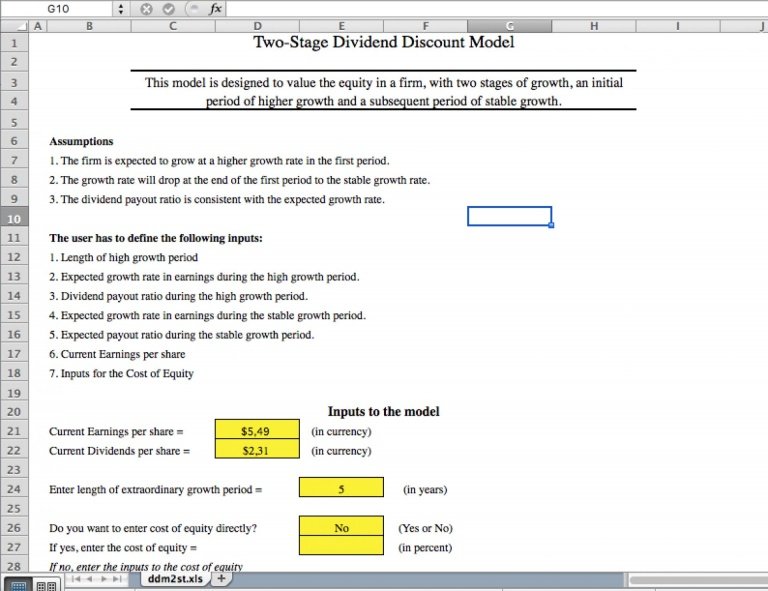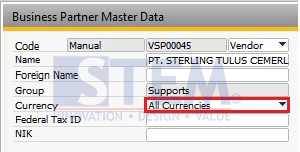
SNP500 options are a derivative the S&P 500. These contracts can be traded on the NSE or INDIA NATIONAL STOCKET EXCHANGE. These contracts can be purchased or sold at many brokerage firms. You will also find a high quality trading platform. We will be discussing the basics and technical reports of S&P 500 futures, charts, strategies, and other information in this article.
E-mini S&P 500 futures
There are several benefits of trading in E-mini S&P 500 futures. These contracts expire each quarter on the last Friday in March, June and September. E-minis can only be traded through a margin account. Trades may be placed on the last working day of each week. The ticker symbol for the contract is "ES".
E-mini S&P 500 futures trade on a quarterly basis with three trading months: March, June and December. Additionally, investors can trade this type of futures in order to hedge macro exposure as well as capitalize on anticipated movements in the S&P 500 Index. Traders can also trade around market-moving events, including the U.S. Jobs Report, quarterly earnings reports, and the FOMC statements. E-mini S&P500 Futures Contracts are available to trade stocks and commodities as well as currencies.

S&P 500 Index
If you're considering gaining exposure to the broader market, leveraging your stock portfolio to mitigate volatility, or adding flexibility during earnings season, S&P 500 index futures may be the perfect tool. Futures can be complicated to understand despite the many benefits they offer. To help you make good decisions and navigate the markets, we will cover the basics of trading these futures. Continue reading for more information.
Both the traditional E-mini S&P and the new Micro E-mini S&P options are based on S&P 500 Index futures. They trade on the Chicago-based CME Group Exchange. These futures offer liquidity that can meet both sellers and buyers' needs. Professional traders use S&P-based Futures to protect their portfolios and hedge against market downturns.
Trading platforms
SNP500 futures trading is a way to diversify your portfolio. E-minis are listed for nine consecutive quarterly periods and three additional December contracts months. E-minis can be used to manage global equity exposure and are tax-efficient. How do you find the right trading platform? Below are some benefits associated with E-mini Futures. Before you make a decision about which trading platform is best for you, check if it has been regulated by CFTC.
TD Ameritrade : TD Ameritrade can be a great option for options and futures traders. This broker offers high-tech desktop trading platforms and supports all types brokerage accounts. It has a robust mobile app and offers no minimum balance. There are also a number of tools and education resources. TD Ameritrade has the lowest cost way to trade futures.

S&P 500 futures are an interest-paying investment
While the recent stock rally surprised many investors, it has led to stock markets rising. Since May 2009, short interest in S&P 500 futures is growing. The rally is due to greater investor confidence, a neutral Chicago Mercantile Exchange position, and the strong individual value of the Nasdaq 100. It has its downsides. These issues will be addressed in this article.
S&P 500 derivatives futures are a great option to hedge against potential downsides in your stock investments. Investors closely track these contracts because they act as a leading indicator of market movements, and they can speculate on what the index will go up or down in the future. The Chicago Mercantile Exchange lists futures on the S&P 500, the benchmark index. This makes S&P 500 Futures one of America's most liquid types.
FAQ
Why are marketable securities important?
The main purpose of an investment company is to provide investors with income from investments. It does this through investing its assets in various financial instruments such bonds, stocks, and other securities. These securities are attractive because they have certain attributes that make them appealing to investors. They may be safe because they are backed with the full faith of the issuer.
Marketability is the most important characteristic of any security. This is how easy the security can trade on the stock exchange. You cannot buy and sell securities that aren't marketable freely. Instead, you must have them purchased through a broker who charges a commission.
Marketable securities can be government or corporate bonds, preferred and common stocks as well as convertible debentures, convertible and ordinary debentures, unit and real estate trusts, money markets funds and exchange traded funds.
These securities are a source of higher profits for investment companies than shares or equities.
What is the difference?
Brokers are individuals who help people and businesses to buy and sell securities and other forms. They handle all paperwork.
Financial advisors are experts on personal finances. They are experts in helping clients plan for retirement, prepare and meet financial goals.
Banks, insurers and other institutions can employ financial advisors. Or they may work independently as fee-only professionals.
Consider taking courses in marketing, accounting, or finance to begin a career as a financial advisor. You'll also need to know about the different types of investments available.
What is the difference between stock market and securities market?
The whole set of companies that trade shares on an exchange is called the securities market. This includes stocks and bonds, options and futures contracts as well as other financial instruments. Stock markets are usually divided into two categories: primary and secondary. Large exchanges like the NYSE (New York Stock Exchange), or NASDAQ (National Association of Securities Dealers Automated Quotations), are primary stock markets. Secondary stock market are smaller exchanges that allow private investors to trade. These include OTC Bulletin Board (Over-the-Counter), Pink Sheets, and Nasdaq SmallCap Market.
Stock markets are important for their ability to allow individuals to purchase and sell shares of businesses. It is the share price that determines their value. When a company goes public, it issues new shares to the general public. These shares are issued to investors who receive dividends. Dividends are payments made by a corporation to shareholders.
Stock markets serve not only as a place for buyers or sellers but also as a tool for corporate governance. Boards of directors are elected by shareholders to oversee management. They ensure managers adhere to ethical business practices. If a board fails in this function, the government might step in to replace the board.
What is a bond?
A bond agreement between two parties where money changes hands for goods and services. It is also known by the term contract.
A bond is usually written on a piece of paper and signed by both sides. The document contains details such as the date, amount owed, interest rate, etc.
The bond can be used when there are risks, such if a company fails or someone violates a promise.
Bonds are often used together with other types of loans, such as mortgages. This means that the borrower has to pay the loan back plus any interest.
Bonds can also help raise money for major projects, such as the construction of roads and bridges or hospitals.
The bond matures and becomes due. When a bond matures, the owner receives the principal amount and any interest.
Lenders are responsible for paying back any unpaid bonds.
What is security in the stock market?
Security is an asset which generates income for its owners. Most security comes in the form of shares in companies.
A company could issue bonds, preferred stocks or common stocks.
The earnings per shared (EPS) as well dividends paid determine the value of the share.
If you purchase shares, you become a shareholder in the business. You also have a right to future profits. If the company pays you a dividend, it will pay you money.
You can sell shares at any moment.
Are bonds tradable?
Yes, they do! Bonds are traded on exchanges just as shares are. They have been trading on exchanges for years.
The difference between them is the fact that you cannot buy a bonds directly from the issuer. You will need to go through a broker to purchase them.
It is much easier to buy bonds because there are no intermediaries. This also means that if you want to sell a bond, you must find someone willing to buy it from you.
There are many kinds of bonds. Different bonds pay different interest rates.
Some pay interest every quarter, while some pay it annually. These differences make it easy compare bonds.
Bonds are great for investing. For example, if you invest PS10,000 in a savings account, you would earn 0.75% interest per year. This amount would yield 12.5% annually if it were invested in a 10-year bond.
If all of these investments were put into a portfolio, the total return would be greater if the bond investment was used.
Statistics
- Individuals with very limited financial experience are either terrified by horror stories of average investors losing 50% of their portfolio value or are beguiled by "hot tips" that bear the promise of huge rewards but seldom pay off. (investopedia.com)
- For instance, an individual or entity that owns 100,000 shares of a company with one million outstanding shares would have a 10% ownership stake. (investopedia.com)
- Even if you find talent for trading stocks, allocating more than 10% of your portfolio to an individual stock can expose your savings to too much volatility. (nerdwallet.com)
- "If all of your money's in one stock, you could potentially lose 50% of it overnight," Moore says. (nerdwallet.com)
External Links
How To
How to trade in the Stock Market
Stock trading is a process of buying and selling stocks, bonds, commodities, currencies, derivatives, etc. Trading is French for traiteur, which means that someone buys and then sells. Traders purchase and sell securities in order make money from the difference between what is paid and what they get. This is the oldest type of financial investment.
There are many ways you can invest in the stock exchange. There are three basic types: active, passive and hybrid. Passive investors are passive investors and watch their investments grow. Actively traded investor look for profitable companies and try to profit from them. Hybrid investors combine both of these approaches.
Index funds that track broad indexes such as the Dow Jones Industrial Average or S&P 500 are passive investments. This approach is very popular because it allows you to reap the benefits of diversification without having to deal directly with the risk involved. All you have to do is relax and let your investments take care of themselves.
Active investing means picking specific companies and analysing their performance. Active investors look at earnings growth, return-on-equity, debt ratios P/E ratios cash flow, book price, dividend payout, management team, history of share prices, etc. They decide whether or not they want to invest in shares of the company. If they feel the company is undervalued they will purchase shares in the hope that the price rises. On the other hand, if they think the company is overvalued, they will wait until the price drops before purchasing the stock.
Hybrid investments combine elements of both passive as active investing. A fund may track many stocks. However, you may also choose to invest in several companies. In this case, you would put part of your portfolio into a passively managed fund and another part into a collection of actively managed funds.